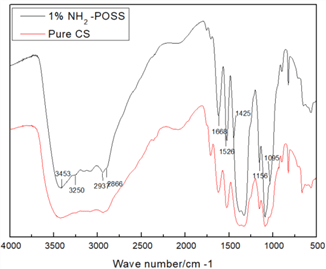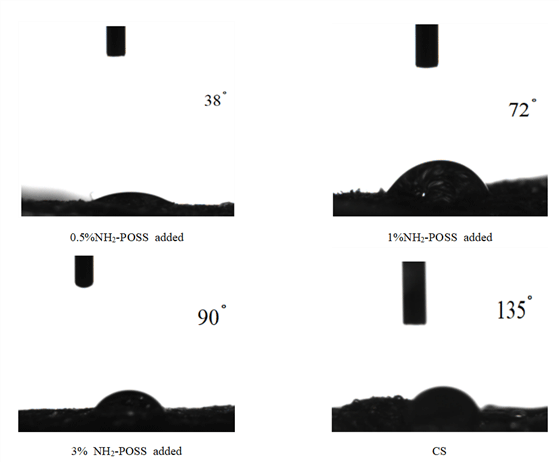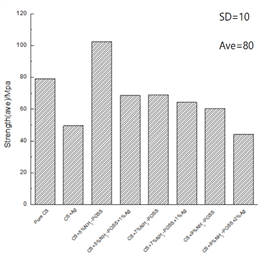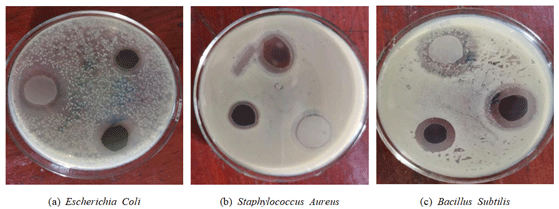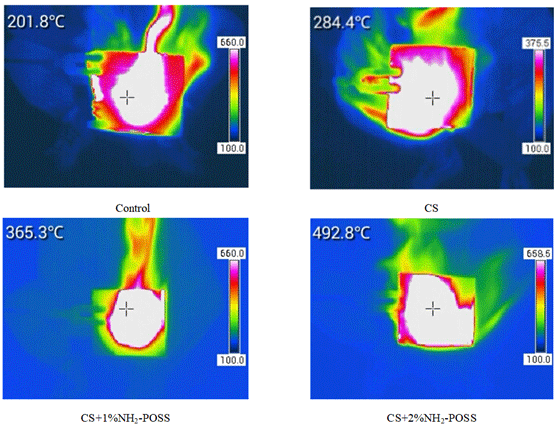1. INTRODUCTION
Plywood is widely used in furniture manufacture, residential and commercial interior finish and casework applications (Park et al., 2021). In the process of making Asian string instruments like Korean geomungo and gayageum, Chinese zheng, and Japanese koto, the surface of paulownia wood is often finished by scorching with a hot iron of over 1000℃ (Lee et al., 2021). But, wood has high hydrocarbon content and is a flammable material. Wood flame retardancy is the process of reducing the burning rate of wood and accelerating the carbonization of the burning surface in order to win rescue time. The mechanism of action of flame retardants is to form a protective layer on the wood surface to isolate or dilute the oxygen supply. In the case of decomposition at high temperature, a large amount of non-flammable gas or water vapor is released, diluting the flammable gas released during wood pyrolysis. The temperature of retarded wood decreases, which makes it difficult to reach the temperature required for pyrolysis. The flame retardant treatment improves the formation ability of charcoal, reduces the heat transfer rate and cuts off the burning chain to quickly extinguish a fire (Park et al., 2020, 2021). In order to improve the flame retardancy of the wood composites, studies on the development of flame retardant epoxy and isocyanate adhesives have also been conducted (Li, 2019; Wen et al., 2020). Also, Chitosan is known to have a flame retardant effect, but its effect is weak (Zhao et al., 2021; Liu et al., 2020; Ren, 2020). The unique inorganic Si-O-Si structure of POSS has outstanding thermal stability and flame retardancy, which can improve the flame retardant performance of chitosan. In addition, its kernel class inorganic flame retardant of silica and the R group structure design make POSS important in flame retardant polymer (Li et al., 2019; Yuan et al., 2016). Chitosan is safe and nontoxic, and its unique molecular structure makes its chemical properties stable, and it has good biocompatibility, degradability, film formation, adsorbability and antibacterial properties and chitosan is widely used in the food packaging industry (Caz et al., 2017). However, chitosan also has many shortcomings in structure and performance, such as: it does not completely dissolve in water and alkalisolution, is insoluble in ordinary organic solvents, and only soluble in dilute acid and weak acid. Chitosan matrix materials are brittle, fragile and have poor water vapor barrier performance (Phil et al., 2017). These weaknesses of chitosan affect its practical application in industrialization to a great extent. In order to improve the properties of chitosan and meet the needs of practical application in wood products, chitosan should be modified. Moreover, as interior decoration material, wood products are often in contact with human body, and there will be bacteria on the surface of wood (Guan et al., 2020; Hao et al., 2019; Xing et al., 2018). Therefore, it is very necessary to give wood coatings antibacterial properties (Li et al., 2019). The selection of nano silver (Ag NPs), can enhance its antibacterial effect (Hu et al., 2020) and expand its antibacterial spectrum on the one hand, while on the other hand, it can be used to improve the strength and other properties of composite coatings (Liu et al., 2010; Liu et al., 2019; Yu et al., 2019). In this paper, a novel flame retardant and antibacterial wood coating preparation method was developed with the composite membrane system of chitosan, POSS-based new phosphorus, nitrogen and silicon flame retardant and nano silver. It is hoped that this composite membrane can provide wood with more functional properties and thus widen its application as an interior decoration material.
2. MATERIALS and METHODS
CS (deacetylation≥95%, viscosity 100,000-200,000 cps), NH2-POSS (synthetic in laboratory), NaOH, anhydrous calcium chloride, silver nitrate, and glacial acetic acid are all analytically pure. Escherichia coli: ATCC8099 was produced by Nanjing Becheng Biotechnology Co., Ltd.
KH550 40.628 g was added to a 500 mL three-necked flask and magnetically stirred. After mixing 118.96 g of tetrahydrofuran with 28.414 g of distilled water, slowly added to the flask, heated to 60°C and refluxed, then added 10-12 drops of HCl, and reacted at a constant temperature for 72 hr. The orange-yellow product was filtered with suction and dried at 60°C to obtain NH2-POSS powder.
A certain amount of CS was weighed in a glacial acetic acid solution with a volume fraction of 1% and stirred until it was completely dissolved to prepare the CS solution with a mass fraction of 1%. A certain amount of silver nitrate was added and it was stirred well. Then, 0%, 0.5%, 1%, 3%, 5% and 7% of dissolved NH2-POSS solution were added to the CS/Ag NPs solution. After magnetic stirring for 20 hr and ultrasonic treatment for 20 min, a film forming solution was prepared. Waiting for 24 hr, the film was formed by flow extension and then dried in an oven at 40℃ for 16 hr to form the film. The membrane was taken out and soaked in 1 mol/L sodium hydroxide solution for 20 min, and then cleaned repeatedly with pure water. The membrane was dried at room temperature and then put into a drying dish for later use.
The composite membrane was scanned by a Fourier transform infrared spectrometer (FTIR) with a scanning range of 400-4,000 cm-1 and the number of infrared scanning was 32 times, and the resolution was 4.00 cm-1. The infrared test used the FTIR-650 Fourier transform infrared spectrometer.
The effect of NH2-POSS concentration on the hydrophobic properties of composite films was tested. The test liquid was deionized water. Each membrane group was tested three times, and the average value was taken as the result. The contact angle test uses the water drop angle tester (model HD-U805) of Dongwan City Haida Instrument Co., Ltd.
Refer to GB/T 1040.3, membrane mechanical properties of the determination of tensile strength. The sample width was 10 mm, the fixture spacing was 50 mm, and the stretching speed was 50 mm/min. Each sample test was repeated at least 10 times. The tensile performance test uses the electronic tensile testing machine (model WDD-100) of Beijing Guance Jingdian Instrument Equipment Co., Ltd.
The concentration of Escherichia Coli solution was 1.5 × 107 CFU, and 100 µL of the activated Escherichia Coli solution was added to a solidified agar medium plate and evenly coated. The film was sampled with a perforator with a diameter of 6 mm, and the circular diaphragm obtained was sterilized under a UV lamp for 30 min. After sterilizing, sterile tweezers were used to clip the membrane onto the surface of the medium plate, and three diaphragms were evenly distributed on each plate. Then the plate was cultured in a constant temperature incubator at 37℃ for 24 hr and then taken out. The results of the bacteriostatic experiment were recorded by photos. Staphylococcus Aureus (ATCC29213) was activated. The NH2-POSS/CS-nano silver film was cut into a wafer with a diameter of about 0.5 cm. Staphylococcus Aureus was inoculated in a shaking flask, cultured at 37℃ and 200 RPM for 2 hr, then 100 µL of bacterial solution was removed and evenly applied on the agar plate. The mixed film samples were separately placed on the agar plate and cultured at 37℃ for 24 hr, and the bacteriostatic experiment results were recorded by photos. Activation of Bacillus Subtilis strains: LB medium (tryptone 10.0 g, yeast extract 5.0 g, NaCl 10.0 g dissolved in 1.0 L distilled water) was prepared and autoclaved (121°C, 15 min.) after pH 7.0 was adjusted. Bacillus Subtilis (about 108 Cfu/mL) was inoculated into LB medium at 100 µL and incubated at 37℃ for 24 hr. The results of antibacterial experiments were recorded by photos. And the ratio of the membrane of each plate was CS+0.5%NH2-POSS, CS+0.5%NH2-POSS+1%Ag, CS+1%NH2-POSS+1%Ag.
The sample was made into 100 mm × 100 m × 1 mm by using the butane spray gun of a calorific value meter. The sample was burned through three times for each sample. The thermal imager uses the German Testo 865 infrared thermal imager, the original infrared thermal imaging thermometer. Infrared thermometer; The use of butane spray gun: The spray gun was Ignited and aimed at the center of the sample, and the sample was burn every half a minute. When the sample burns through, the spray gun was stopped and a photo was taken to record the temperature.
3. RESULTS and DISCUSSION
According to the infrared characterization in Fig. 1, 3,453 cm-1 and 1,526 cm-1 are the characteristic absorption peaks of –NH2, 3,250 cm-1 is the absorption peak of –NH4+, 1,065 cm-1 is the absorption peak of Si-O-Si, 2,866-2,937 cm-1 is the absorption peak of C-H, 1,425 cm-1 is the absorption peak of -CH2 and –CH3, 1,156 cm-1 is the absorption peak of C-O-C, 896-1,095 cm-1 is the absorption peak of the chitosan ring, and 1,029 cm-1 is the absorption peak of chitosan C-O. In the infrared image of 1% NH2-POSS-based phosphorous nitrogen flame retardant, the absorption peak of chitosan C=O appeared at 1,639-1,668 cm-1, which can prove that NH2-POSS-based phosphorous nitrogen flame retardant was successfully grafted onto chitosan.
Considering that it is a coating film, the hydrophobicity of the coating film should be considered. The contact angle was tested, and the results are shown in Fig. 2. CS film is a super-hydrophilic film. The contact angle with oil makes the difference more distinct. The contact angle with oil is 158°. When NH2-POSS increased to 3%, the contact angle was 90°, which reached the level of being hydrophobic. The phenomenon is explained as the amino group on NH2-POSS is hydrogen-bonded with the main hydrophilic functional groups -OH and -NH2 of the chitosan molecule, so that the free hydrophilic functional groups are reduced, thus improving the hydrophobicity of the surface of the composite film.
In order to explore the influence of the addition of NH2-POSS on the tensile properties of the film, the tensile properties of the film were tested. As shown in Fig. 3, when NH2-POSS is added 5%, the mechanical strength of the film is 30 higher than the average value. But when the amount of NH2-POSS is higher than 5%, the performance of the film is reduced. The reason is that the excessive amount of NH2-POSS leads to agglomeration, resulting in performance degradation.
The test of antibacterial performance is shown in Fig. 4. The antibacterial effect of the three membranes on Escherichia Coli was basically the same. The antibacterial effect on Staphylococcus Aureus and Bacillus Subtilis was obvious. The antibacterial effect of the membrane with Ag was contrasted with that without Ag. The inhibition zone of the membrane without Ag was 13.2 mm, and the inhibition zones of the membranes with 0.5% and 1% NH2-POSS were 15.49 mm and 20.3 mm, respectively. For the antibacterial effect of Bacillus Subtilis, the comparison of antibacterial effect between membranes with Ag and without Ag is also distinct. The inhibition zone of the membrane without Ag was 16.7 0mm, and that of the membranes with 0.5% and 1% NH2-POSS were 19.41 mm and 22.39 mm, respectively. It can be concluded from this experiment that the addition of Ag greatly improves the antibacterial performance of the membrane, and the addition of NH2-POSS also improves the antibacterial performance of the membrane. This is because -NH2 is easy to combine with H+ to form -NH3+. With the increase in deacetylation degree, -NH3+ increases, and the electrostatic attraction to bacteria (with negative charge) increases, leading to more bacteria being flocculated and concentrated, thus inhibiting the growth and reproduction of microorganisms. This also explains why the concentration of NH2-POSS increases, and the inhibition zone of the membrane becomes larger, and the antibacterial performance becomes stronger.
The fire performance was tested by a calorific value meter, and a butane spray gun was used to conduct fire spraying tests on the wood surface with and without the CS membrane coating. The test results are shown in Table 1. The burn-through temperature of the raw wood in the control group (referring to the temperature when the wood is approximately burned through) was 201.8℃, and the burn-through temperature of CS film did not obviously increase. However, the test of the composite coating film was continued. It was found that when NH2-POSS was added to 2%, the burning temperature of the wood increased more than two times and the burning time was also improved compared with the control group, reflecting the superior flame retardant performance of the coating film.
| Category | Control | CS | CS+1%NH2-POSS | CS+2%NH2-POSS |
|---|---|---|---|---|
| Temperature | 201.8℃ | 284.4℃ | 365.3℃ | 492.8℃ |
| SD | 107.8 | |||
4. CONCLUSION
Based on the above experiments, the hydrophobic properties and flame resistance of the wood with coating composite CS film with the addition of NH2-POSS are gradually enhanced. These advantages increase the application of composite membranes in the wood products fields. And it was found in the experiment that when the amount of NH2-POSS was higher than 5%, agglomeration would occur, which resulted in poor performance of the composite film. The experiment on antibacterial properties of the CS coating of wood showed that the wood surface has certain antibacterial properties, which can lay a foundation for the next research on functional wood paint.
Also, we thank the “R&D Program for Forest Science Technology (Project No. ‘FTIS 2020223A00-2122-AC02’)” provided by the Korea Forest Service (Korea Forestry Promotion Institute) for its support.









